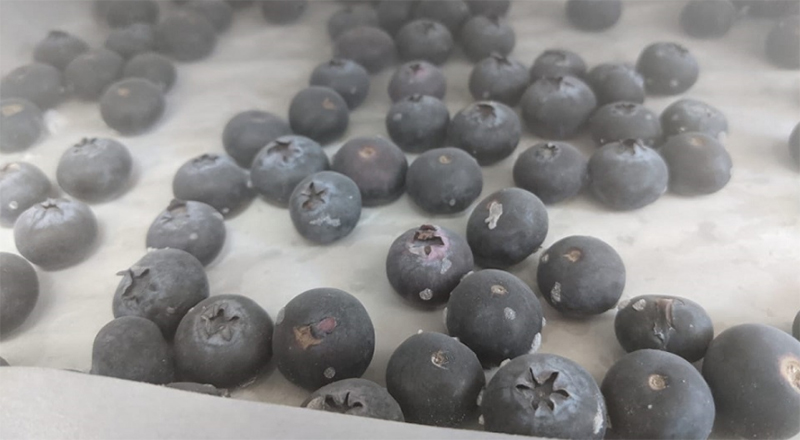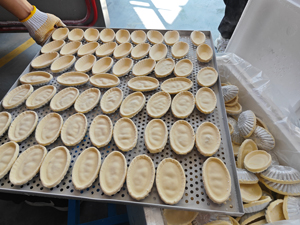Liquid Nitrogen, as a unique substance, plays an indispensable role in modern technology and life with its remarkable characteristics and diverse applications. It not only provides strong support for the development of industries such as manufacturing, medicine, and others but also brings innovation and transformation to the food industry. It is believed that in the future, the applications of Liquid Nitrogen will continue to expand and deepen, creating more value for humanity.

The Concept of Liquid Nitrogen
Liquid Nitrogen is the liquid form of nitrogen gas transformed under low-temperature and high-pressure conditions. Nitrogen gas is one of the main components of the atmosphere around us, accounting for approximately 78% of the air volume.
Characteristics of Liquid Nitrogen
- Its temperature is extremely low, usually reaching approximately -196°C. This extremely low temperature endows Liquid Nitrogen with powerful cooling and freezing capabilities.
- Liquid Nitrogen is inert, and its chemical properties are relatively stable, and it is not prone to chemical reactions with other substances.
- When Liquid Nitrogen evaporates, it rapidly absorbs a large amount of heat. This property enables it to play an important role in many fields.
The Connection and Difference between Liquid Nitrogen and Nitrogen Gas
Connection: Their chemical essence is exactly the same, both composed of nitrogen elements. Nitrogen atoms are the basic units constituting nitrogen gas and Liquid Nitrogen. From the perspective of the composition of substances, Liquid Nitrogen is merely a physical state change of nitrogen gas, and their chemical properties are essentially the same. This means that both nitrogen gas and Liquid Nitrogen are generally not prone to chemical reactions with other substances, showing relative chemical stability.
Difference:
- The physical states are different. Nitrogen gas is in a gaseous state at normal temperature and pressure, presenting a colorless, odorless, and tasteless gas state, Having the ability to be compressed and expanded. While Liquid Nitrogen is in a liquid state and has fluidity.
- In terms of temperature and pressure conditions, the boiling point of nitrogen gas under standard atmospheric pressure is approximately -195.8°C. To convert nitrogen gas into Liquid Nitrogen, the temperature needs to be reduced below its boiling point and appropriate pressure needs to be applied. Liquid Nitrogen is usually maintained at an extremely low temperature of approximately -196°C.
- In terms of physical properties, the density of Liquid Nitrogen is much higher than that of nitrogen gas.
- In terms of energy states, Liquid Nitrogen has lower internal energy, while the internal energy of nitrogen gas is relatively higher.
Applications of Liquid Nitrogen
In the industrial field, Liquid Nitrogen is often used for the cold treatment of metals. In the quenching process of steel, Liquid Nitrogen can rapidly cool the metal, changing its internal structure and thereby enhancing the hardness and wear resistance of the metal. Liquid Nitrogen can also be used to crush rubber, and makes rubber brittle at low temperatures and then pulverizing it into fine particles for the manufacture of various rubber products.
In the biomedical field, Liquid Nitrogen is crucial for preserving biological samples. Cells, tissues, organs, and even embryos can be preserved for a long time in the ultra-low-temperature environment created by Liquid Nitrogen, maintaining their biological activity. This is of utmost significance for medical research, disease diagnosis, and reproductive medicine.
In the field of scientific research, Liquid Nitrogen is often used in the study of superconducting materials. Certain materials exhibit superconducting properties at extremely low temperatures, and Liquid Nitrogen can provide the necessary low-temperature conditions to help scientists deeply explore the superconducting phenomenon and provide a theoretical basis for future energy transmission and the development of efficient equipment.
The Contribution of Liquid Nitrogen in the Food Field
- In the food field, the application of Liquid Nitrogen has brought many innovations and breakthroughs. Liquid Nitrogen can achieve rapid freezing of food, which is crucial for maintaining the quality and nutritional value of food. When Liquid Nitrogen comes into contact with food, it can reduce the temperature to an extremely low level in a very short time, quickly pass through the ice crystal formation zone, reduce the formation of ice crystals and cell damage, thereby maximizing the retention of the original taste, color, and nutritional components of the food.
- Some well-known seafood processing enterprises will adopt Liquid Nitrogen freezing technology to process freshly caught shrimp. Immediately after being caught on the boat, the shrimp are placed in a Liquid Nitrogen quick-freezing device for freezing, allowing them to reach an extremely low temperature instantly, locking in the freshness and nutrition of the shrimp meat. Treated shrimp in this way can still maintain the firmness and elasticity of the shrimp meat after thawing, and the taste is almost the same as that of freshly caught shrimp.
- For fruits and vegetables, some large fruit and vegetable production enterprises will use Liquid Nitrogen to treat delicate fruits such as strawberries and blueberries immediately after harvest. Liquid Nitrogen freezing effectively retains the nutrients such as vitamins, minerals, and antioxidants in the fruits, allowing consumers to taste fresh and nutritious fruits in different seasons.
- Many food enterprises have also introduced advanced Liquid Nitrogen quick-freezing equipment. Liquid Nitrogen IQF Tunnel Freezer can continuously process a large amount of food, allowing the food to quickly pass through the Liquid Nitrogen spray area on the conveyor belt to achieve efficient freezing.
- Liquid Nitrogen is also used for the refrigerated transportation of food. During long-distance transportation, Liquid Nitrogen can maintain the low-temperature environment inside the refrigerated compartment to ensure the quality of the food is not affected during transportation.
 Nov 13, 2025
Nov 13, 2025


